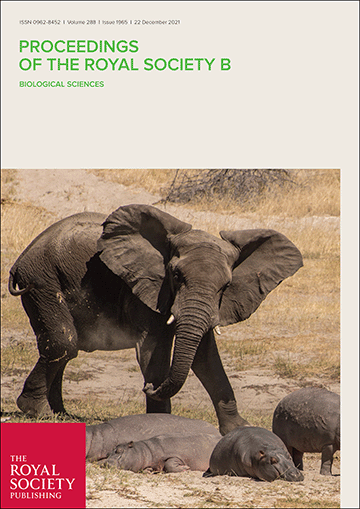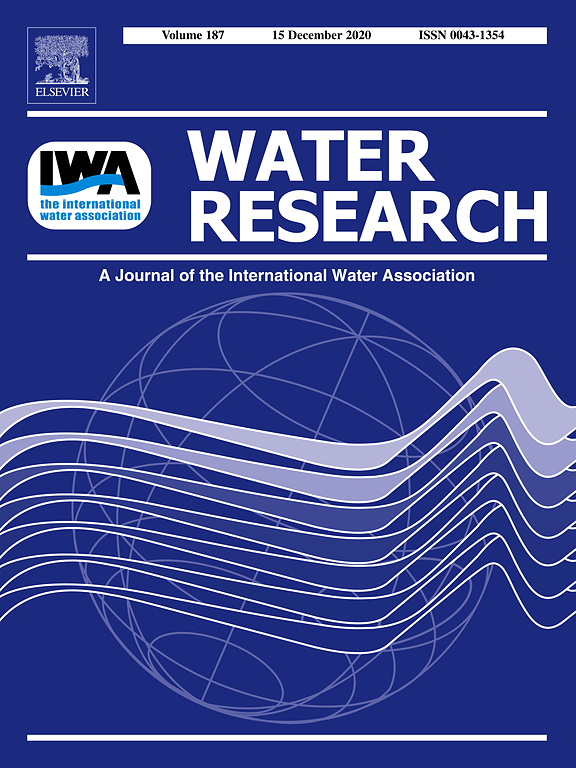Please find all scientific publications of IGB under > scientific publications
For more detailed information please refer to our > library catalogue
261 - 270 of 739 items

November 2024
Applied and Environmental Microbiology. - 90(2024)12, 1-20
Inside the Atacama Desert: uncovering the living microbiome of an extreme environment
Alexander Bartholomäus; Steffi Genderjahn; Kai Mangelsdorf; Beate Schneider; Pedro Zamorano; Samuel P. Kounaves; Dirk Schulze-Makuch; Dirk Wagner

November 2024
Communications Earth & Environment. - 5(2024), Art. 695
Light-dependent methane production by a coccolithophorid may counteract its photosynthetic contribution to carbon dioxide sequestration
Yuming Rao; Guang Gao; Ilana Berman-Frank; Mina Bizic; Kunshan Gao
November 2024
FEMS Microbiology Ecology. - 100(2024)11, Art. fiae139
Metabarcoding reveals ecologically distinct fungal assemblages in river and groundwater along an Austrian alpine to lowland gradient
Alice Retter; Christian Griebler; R. Henrik Nilsson; Johannes Haas; Steffen Birk; Eva Breyer; Federico Baltar; Clemens Karwautz
November 2024
Biological Reviews. - 100(2025)2, 855-870
Shedding light on biodiversity: reviewing existing knowledge and exploring hypothesised impacts of agrophotovoltaics
Rachel Schwarz; Yaron Ziv
November 2024
Water Resources Research. - 60(2024)9, Art. e2024WR037508
Attributing Urban Evapotranspiration From Eddy‐Covariance to Surface Cover: Bottom‐Up Versus Top‐Down
H. J. Jongen; S. Vulova; F. Meier; G. J. Steeneveld; F. A. Jansen; D. Tetzlaff; B. Kleinschmit; N. Haacke; A. J. Teuling
Evapotranspiration (ET) is an important process in the water cycle that can help reduce heat stress in cities. However, it is dependent on surface cover. The study provides insights that can inform urban planning and water management decisions, including improving the living environment of city dwellers.
November 2024
Journal of Hazardous Materials. - 479(2024), Art. 135675
Distinct influences of altitude on microbiome and antibiotic resistome assembly in a glacial river ecosystem of Mount Everest
Xin Liao; Liyuan Hou; Lanping Zhang; Hans-Peter Grossart; Keshao Liu; Junzhi Liu; Yuying Chen; Yongqin Liu; Anyi Hu

November 2024
Limnology and Oceanography : Methods. - 23(2024)1, S. i-iii, 1-86
Modular shadowgraph imaging for zooplankton ecological studies in diverse field and mesocosm settings
Adam T. Greer; Patrick I. Duffy; Tim J. W. Walles; Charles Cousin; Laura M. Treible; Kyle D. Aaron; Jens C. Nejstgaard
October 2024
Proceedings of the Royal Society B: Biological Sciences. - 379(2024)1916, 20230508
Divergent age-related changes in parasite infection occur independently of behaviour and demography in a wild ungulate
Gregory F. Albery; Adam Z. Hasik; Sean Morris; Alison Morris; Fiona Kenyon; David McBean; Josephine M. Pemberton; Daniel H. Nussey; Josh A. Firth

October 2024
JAMES. - 16(2024)10, Art. e2024MS004275
A Lake Biogeochemistry Model for Global Methane Emissions: Model Development, Site-Level Validation, and Global Applicability
Zeli Tan; Huaxia Yao; John Melack; Hans-Peter Grossart; Joachim Jansen; Sivakiruthika Balathandayuthabani; Khachik Sargsyan; L. Ruby Leung
October 2024
Water Research. - 268(2024), Art. 122602
Epilimnetic oligotrophication increases contribution of oxic methane production to atmospheric methane flux from stratified lakes
Fan Xun; Muhua Feng; Cheng Zhao; Wenlei Luo; Xiaotong Han; Zhen Ci; Yifan Yin; Rong Wang; Qinglong L. Wu; Hans-Peter Grossart; Peng Xing






